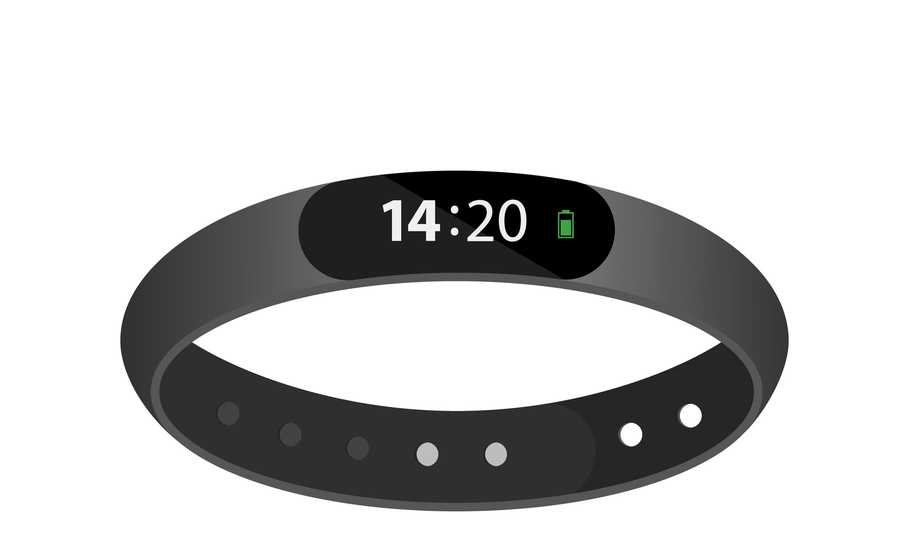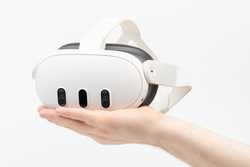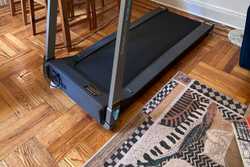When I got off birth control, I knew I needed to track my cycle another way. I searched for the perfect solution, and I eventually found the Oura Ring. The Oura Ring tracks my body temperature and informs me about my cycle—all I have to do is wear a stylish ring! This made me wonder, what other smart rings are out there? I researched products on the internet to find the best smart rings for your individual needs. Read on to find the perfect smart ring for you.
Our picks for the best smart rings
Best smart ring for a variety of health needs: Oura Ring

Oura Ring
Oura rings are the first smart ring that comes to mind for many people, and with good reason. This comprehensive health tracker tracks activity, steps, heart rate, HRV, blood oxygen, and sleep. The Oura ring is a reliable activity tracker, but it has additional uses, like its partnership with Natural Cycles, an FDA-approved non-hormonal birth control option.
Read the full review: Oura Ring Review: Why You Need This Game-Changing Smart Ring
Specifications
- Battery life: Up to 7 days
- Weight: 4 to 6 grams, depending on size
- Sizing: 6 - 13
- Colors: Brushed titanium, silver, black, stealth, gold, rose gold
- Compatibility: iOS 15.0 or later; Android 8.0 or later
- Price on publish: From $299
Pros:
- Wide range of metrics
- Personalized recommendations
- Wide variety of styles and finishes
- Tethered GPS
- Partnerships with Natural Cycles for birth control
Cons:
- Subscription required to access app
- Not as durable as other options, scratches easily
The bottom line:
A do-it-all, comprehensive health tracker.

SLEEPON Go2Sleep
If sleep is the metric you're most interested in tracking, the Go2Sleep is the perfect smart ring for you. You'll get minute-by-minute sleep reporting, HRV, heart rate, and blood oxygen levels. Information is presented as an overview and detailed charts.
Specifications
- Battery life: 3 consecutive nights
- Weight: 6 grams
- Sizing: Small, medium, large (all are included)
- Colors: White
- Compatibility: iOS 10.0 and above, Android 4.2 and above, Windows, Mac
- Price on publish: $89
Pros:
- Affordable
- Advanced sleep tracking
- Doesn’t interfere with sleep
- Easy in-app data visualization
Cons:
- Limited functionality
- Accuracy concerns raised by some users
The bottom line:
A cost effective smart ring that provides in-depth sleep analysis.
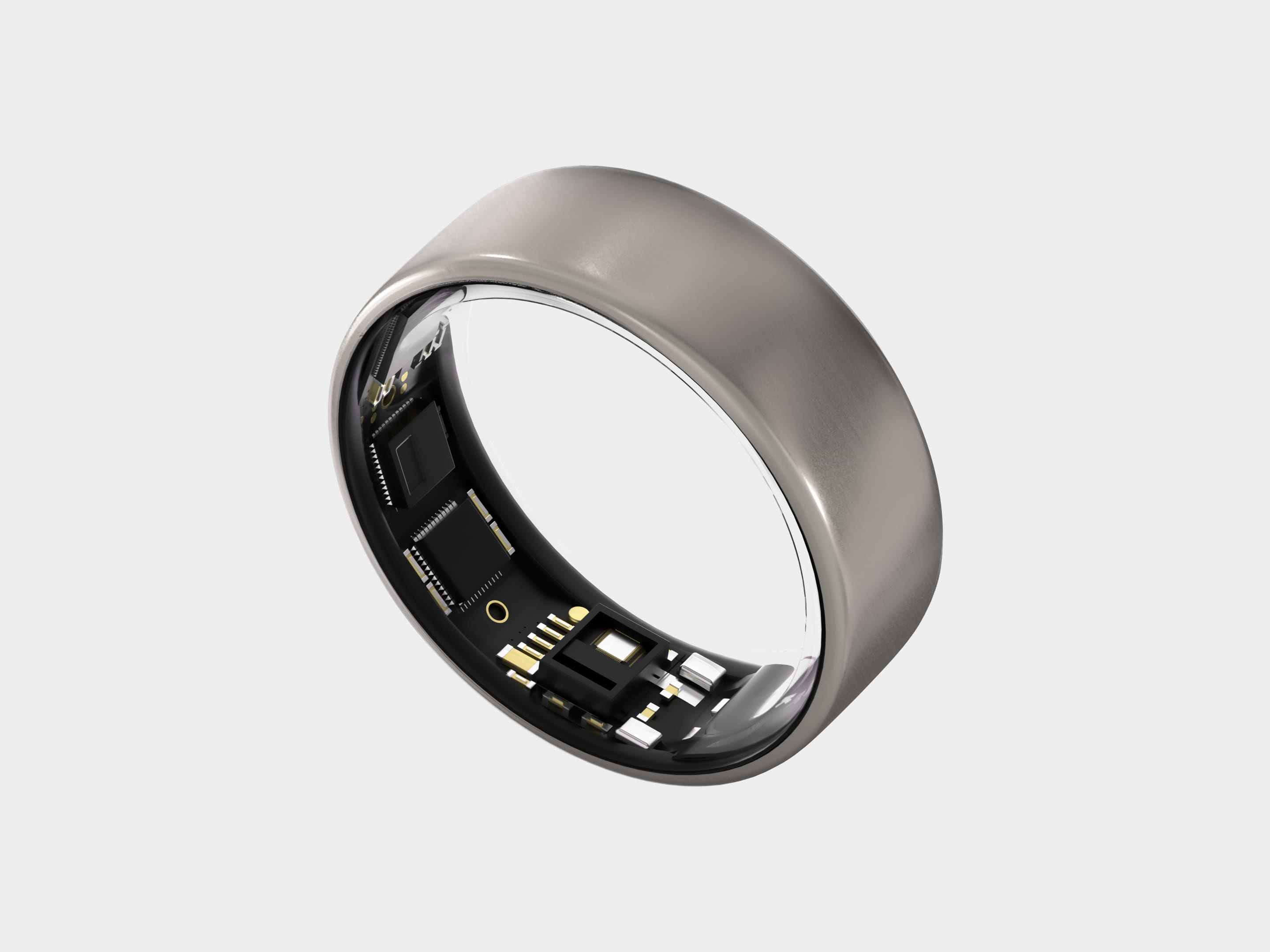
Ultrahuman Ring AIR
The Ultrahuman Ring Air goes beyond basic tracking—it analyzes sleep, heart rate, and skin temperature data to provide personalized insights, like suggestions on when to exercise, how to maximize your recovery, and overall trends.
Specifications
- Battery life: Up to 6 days
- Weight: 2.4 to 3.6 grams, depending on size
- Sizing: 5 - 14
- Colors: Aster black, matte gray, bionic gold, space silver
- Compatibility: iOS 14.0 or later; Android 6 or later
- Price on publish: $349
Pros:
- Advanced data tracking across multiple metrics
- Personalized coaching
- Comfortable, sleek design
- User-friendly app
Cons:
- Price is higher than some similar options
- Does not feature GPS
The bottom line:
An excellent option for data-driven people seeking a comprehensive fitness tracker.
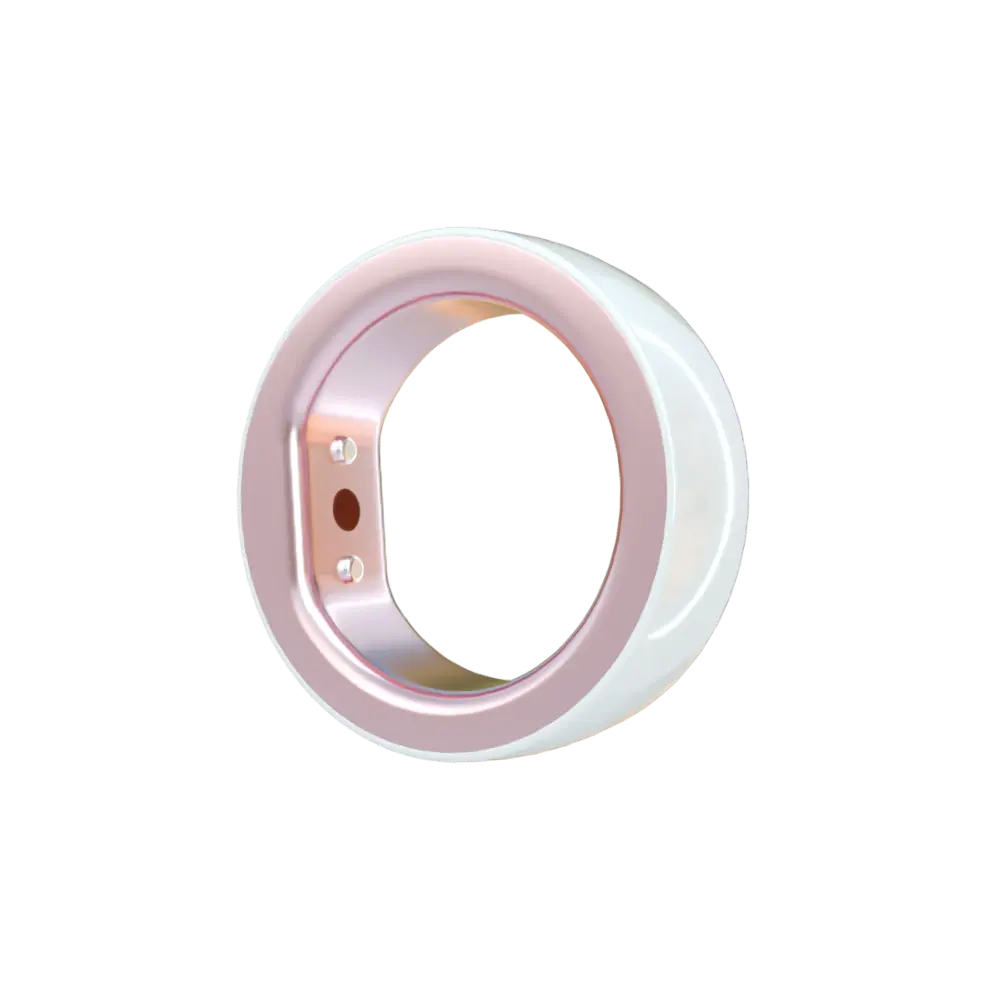
Femometer Smart Ring
If the primary goal for your smart ring is to track your cycle, the Femometer is an excellent choice. The Femometer Smart Ring tracks women's fertility cycles and sleep by measuring skin temperature, heart rate, and blood oxygen and provides insights through its proprietary app.
Specifications
- Battery life: Up to 7 days
- Weight: 3.8 to 4.2 grams, depending on size
- Sizing: 6 - 9
- Colors: White/pink
- Compatibility: iOS 8.0 or later; Android 5.0 or later
- Price on publish: $149
Pros:
- Tracks your cycle and sleep
- Syncs directly with easy-to-use Femometer App
- Waterproof
- 30-day 100% satisfaction guarantee
Cons:
- Does not track other metrics, like activity
- Reviewers report varying accuracy
- Requires a subscription to be able to access all metrics
- Limited style options
The bottom line:
A ring designed specifically for women to monitor their cycle and fertility patterns.

Hecere NFC Ring
The Herce NFC ring seamlessly combines stylish design with practical functionality, allowing users to effortlessly access their devices and perform tasks with a simple tap. The near-field communication, or NFC, technology makes it convenient for everyday interactions like unlocking doors, opening a web page, setting an alarm clock, and sharing contact information.
Specifications
- Battery life: Not available
- Weight: 2.89 ounces
- Sizing: 6 - 11
- Colors: Black
- Compatibility: All NFC-enabled devices
- Price on publish: $29.80
Pros:
- Works with NFC-enabled devices
- Sleek and modern design
- Waterproof
Cons:
- Does not track any metrics
- Limited information available
The bottom line:
A sleek and modern smart ring that allows you to take advantage of NFC compatible devices.
If you're looking for all the capabilities and styles of more expensive smart rings, you'll want to try the Fourmor smart ring. It has a similar look to the Oura Ring at a fraction of the cost and tracks key metrics like sleep, exercise, and body temperature.
Specifications
- Battery life: 7 days
- Weight: Not available
- Sizing: Small, medium, large
- Colors: Black, white
- Compatibility: iOS and Android
- Price on publish: $129.99
Pros:
- Tracks activities, sleep, body temperature, and more
- More budget-friendly than similar options
- No subscription for app
The bottom line:
A budget-friendly Oura ring dupe.
What to consider before buying a smart ring
Sizing
To take full advantage of a smart ring, you’ll need to wear it day and night—meaning that comfort is key. Many smart rings come with sizing kits to help you determine what size would be best for you. I recommend wearing an option from the sizing kit for a few hours and doing normal tasks with it to make sure it is staying in place and isn’t impeding your movement.
Durability
Much like with sizing, you will be wearing this ring a lot and you want to be sure that it can handle every day wear and tear. I address durability in many of our reviews, but I also suggest looking at reviews from consumers to see what kind of activities they do and how their smart ring holds up over time.
Tracking
When you’re making an investment in a smart ring, you want to be sure you’re getting all of the features that you need. Features can vary greatly from model to model, especially when it comes to activity tracking. Before you buy, think about what you need out of your smart ring and check the features to be sure it reliably tracks the metrics that are important to you.
Compatibility and Cost
Since smart rings don’t have a screen, many of them rely on an app to display data. Most options are compatible with iOS and Android, but before you buy double check that your smart ring works with your devices. Additionally, some smart rings charge a fee to use their proprietary app and unlock all of the features of the ring. Five dollars a month might seem small on day one, but the fees can add up over time so make sure you understand the full investment that you’re making.
Which is the right smart ring for me?
When selecting your smart ring, you want to consider the goals you're hoping to accomplish with it and your specific needs. If you're looking for a daily activity tracker, you want to ensure the ring is comfortable, fits your aesthetic, and tracks the metrics you're looking for. Above all, you want to pick a smart ring that fits your needs, requirements, and lifestyle.
Are smart rings reliable?
The answer is—it depends. Factors like brand, build quality, and technology can impact a smart ring's reliability. Generally, well-established brands offer more dependable products than their less common counterparts. However, all technology can encounter glitches or issues like connectivity problems or sensor inaccuracies that impact accuracy and reliability.
How we selected the best smart rings
To pick the best smart rings, I looked into common user needs and desired features, like activity tracking or contactless payments. Then, I dug into the spec sheets and expert reviews to evaluate the following:
Battery life: Since this is a wearable device, it’s important that battery life goes beyond a couple days from a charge. It’s annoying to have to take off the ring to charge it—and time spent charging isn’t time spent tracking.
Comfort: Though everyone’s definition of comfort differs, I looked at factors like size choices, weight, and materials to give an idea of what you can expect when you wear a ring.
Accuracy: If you’re tracking data, you want to make sure that the information is reliable. I considered factors like sensors, what was tracked, and how detailed reports were. I also looked at reviews from those who wore smart rings long-term that spoke to the accuracy of the data.
Lastly, I looked at reviews and user feedback to understand their real-world performance and common strengths and weaknesses. I also considered my own experience with smart rings, specifically, the Oura ring.
Frequently asked questions (FAQs)
Are smart rings worth it?
Whether a smart ring is worth it comes down to personal preference. For some, wearing a simple ring to track activity or have contactless payment capabilities may be worth it. For others, they may miss the interactive screens of smartwatches. Overall, modern smart rings are accurate and reliable, so if you think that is the direction you want to go, you’ll be satisfied.
Is there an alternative to Oura Ring without a subscription?
The best alternative I found was the Fourmor Health Ring. Almost every other smart ring I reviewed does require a fee to use its app. The Fourmor Health Ring does track many of the same features of the Oura, but it does not integrate with other apps like Apple Health or Strava.
What are the disadvantages of smart rings?
There are a few drawbacks to smart rings:
- The lack of displays can hinder interaction
- They rely on smartphones to display data and leverage features
- The smaller size means that the battery is smaller, which can limit battery life
- Some people may not like consistently wearing a ring all day and during the night
What finger do you wear a smart ring on?
The most important thing when wearing a smart ring is making sure whatever finger you wear it on, that you’re comfortable and can wear it without interruptions to your day-to-day activities. Each ring recommends different placements, but many encourage you to wear the ring on your pointer finger for best results.
The information presented here is created by TIME Stamped and overseen by TIME editorial staff. To learn more, see our About Us page.
